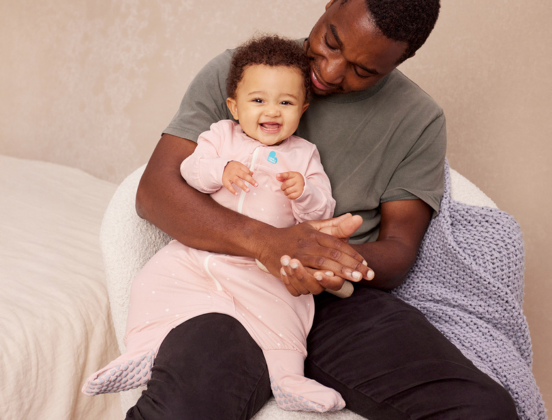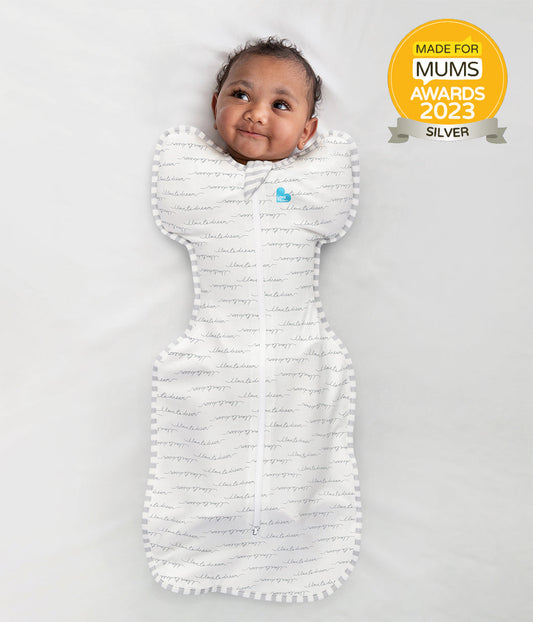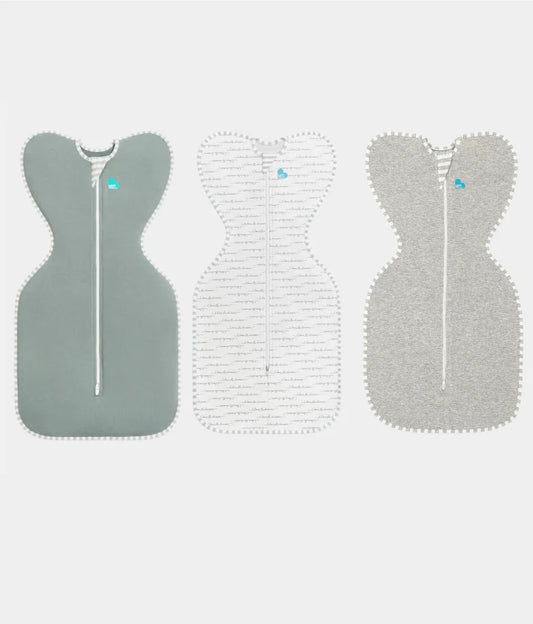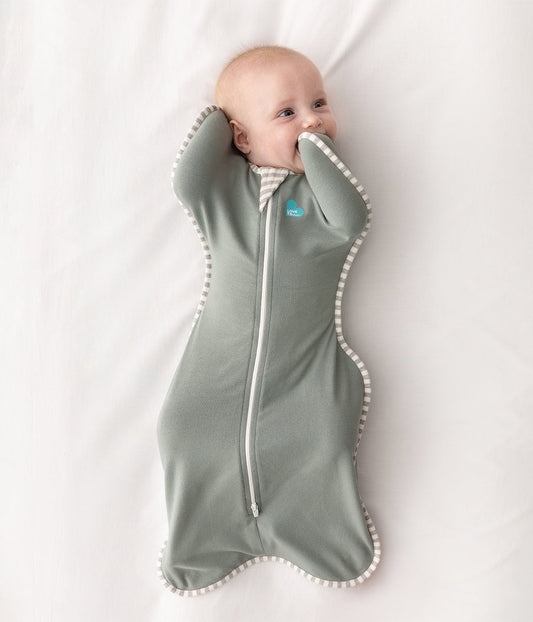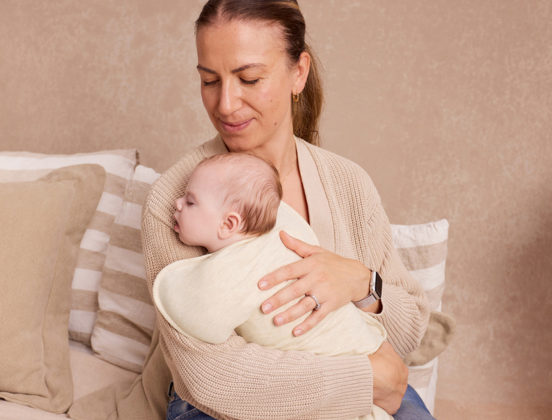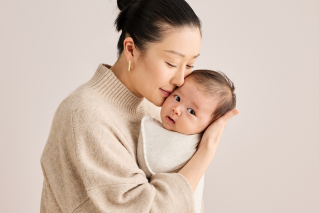Safe sleeping guidelines recommend that babies sleep on their backs in a cot or bassinet, free from obstructions such as pillows, soft toys or loose blankets. Instead, opt for a safe infant sleep bag or swaddle, depending on your baby’s age. In this article, we’ll explore at what age you can introduce a blanket to your baby’s cot or bed, and provide some alternative suggestions to using blankets.
What are the risks of allowing your baby to sleep with a blanket?
Blankets, sheets, and pillows in cots/cribs or bassinets/baskets increase the chances of SUID (Sudden Unexpected Infant Death).
Allowing your baby to sleep with a blanket:
- Increases the risk of SIDS (Sudden Infant Death Syndrome). Babies are at greater risk of SIDS if they have unsafe sleeping environments.
- Increases the risk of fatal sleeping accidents due to obstructed breathing.
Babies can move around their cot space a lot during the night, so if there are blankets or any loose objects in the cot, there is the risk that they may obstruct their delicate and tiny airways. Infants lack the strength to move themselves away from hazards or obstructions by themselves, increasing the risk of suffocation.
Considering the risks outlined above, it is strongly advised by First Candle and many other health organizations around the world, that in order to maximize the safety of your baby, the crib should remain free from any obstructions.
When can a baby sleep with a blanket?
If you’re wondering when infants can sleep with blankets, there is no universally agreed, official age for when blankets can be introduced to your child’s bed or crib. However, most experts agree that children should be at least 12 months of age, but ideally 18 months or older before blankets are used. This is for a number of safety reasons.
From 18 months of age, you can introduce a blanket to your baby’s cot, if you choose to. It’s advised that the blanket is firmly tucked in at the bottom of the cot, coming up no higher than the chest to ensure it can’t be raised above your child’s head during sleep.
How can I keep my baby warm at night without using a blanket?
There are a number of ways to keep your baby warm at night without the need for a blanket:
Swaddles
From birth until the time your baby begins to roll over or lift themselves up (usually around the 4- month mark), babies can be kept comfortably warm through the night with appropriate clothing and either a swaddle or Swaddle Up™. The advantage of using a Swaddle Up, is that when it is correctly fitted, it won’t come loose as your baby moves around during sleep. They are also available in different thermal grades to suit each climate. This is ideal if you’re concerned about your baby becoming cold overnight.


